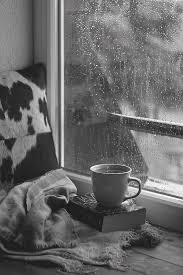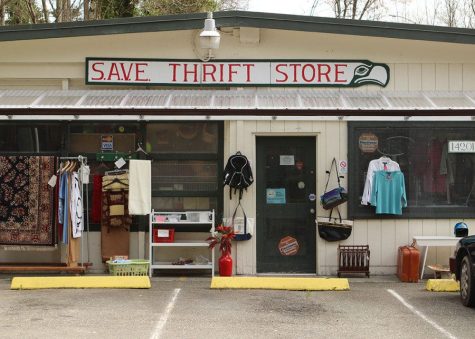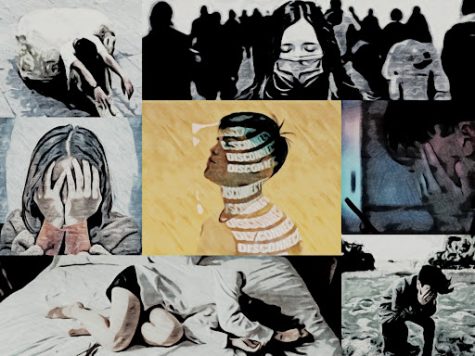Seasonal Affective Disorder

January 23, 2020
Seasonal depression is a disorder that is often overlooked by most people. Someone who has this disorder will fall into a depression around the winter months.
Seasonal affective disorder (SAD or seasonal depression) can occur during the summer but is most common in the winter. The disorder is typically self-diagnosable and can be treated by a medical professional. Treatments include light therapy (phototherapy), talk therapy, and medications (antidepressants).
Symptoms of this condition are similar to that of depression, which include fatigue, depression, hopelessness, and social withdrawal. Someone with depression will stop enjoying things that they once enjoyed, and just seemingly disappear from your life.
Light therapy consists of exposure to daylight or to specific wavelengths of light using fancy polychromatic polarised light, lasers, light-emitting diodes, fluorescent lamps, dichroic lamps or very bright, full-spectrum light. Studies show light therapy affects brain chemicals linked to mood and sleep, easing SAD symptoms. Using a light therapy box may also help with other types of depression and sleep disorders.
Talk therapy (also known as psychotherapy) can be an important part of treatment for depression, and a lot of other mood disorders. A good therapist can help you cope with feelings, problem solve and change behavior patterns that may contribute to your symptoms.
A lot of people think that therapists are cold and judging, but a huge part of their job is making you feel safe and comfortable. Despite common assumptions, you don’t need to have trauma or a form of mental illness to see a counselor, It’s as simple as needing someone to talk too.
With treatment resistant depression, medications are often used to help sort out imbalancing hormones. A list of common antidepressants include,
- citalopram (Celexa)
- escitalopram (Lexapro)
- fluoxetine (Prozac, Sarafem, Selfemra, Prozac Weekly)
- fluvoxamine (Luvox)
- paroxetine (Paxil, Paxil CR, Pexeva)
- sertraline (Zoloft)
- vortioxetine (Trintellix, formerly known as Brintellix)
- vilazodone (Viibryd)
Antidepressants will not work immediately. They need to be built up over time for them to affect someone taking them. Some medications make the condition worse, while others will seemingly completely eliminate it. Everyone is different, because of this, each medication will affect a person differently. An article by Smitha Bhandari on WebMD about antidepressants says, “If you’ve read up on antidepressants — in newspapers and magazines, or on the Web — you might see depression explained simply as a “chemical imbalance” or a “serotonin deficiency.” Unfortunately, it’s not that simple. We really don’t know what causes depression or how it affects the brain. We don’t exactly know how antidepressants improve the symptoms. That said, many researchers believe that the benefits of antidepressants stem from how they affect certain brain circuits and the chemicals (called neurotransmitters) that pass along signals from one nerve cell to another in the brain. These chemicals include serotonin, dopamine and norepinephrine. In various ways, different antidepressants seem to affect how these neurotransmitters behave.”
Self harm is something that is often done by someone who feels that they don’t have a way of releasing pent up emotions. Self harm is far from a safe way to let out your emotions. Resulting wounds may result in infection, or possibly death. There are numerous ways to harm yourself.
For example;
- Cutting or severely scratching your skin
- Burning or scalding yourself
- Hitting yourself or banging your head
- Punching things or throwing your body against walls and hard objects
- Sticking objects into your skin
- Intentionally preventing wounds from healing
- Swallowing poisonous substances or inappropriate objects
Depression isn’t just feeling down or sad for multiple days in a row. Major depressive disorder is when a person feels like there is no hope, their mood is filled with sadness and emptiness, and there’s nothing anyone can do to help them.
Major depression is a serious mental disorder — one that causes a person distress in every area of their life (school, work, relationships, friends, etc.).
If you know someone has depression, try talking to them about how they feel. Help them realize that they aren’t alone in this big, scary world. Something just as simple as smiling at someone in the hallway or complimenting how fierce they look with their new haircut can really turn someone’s day around. I think everyone needs to remember that we aren’t alone and that you can get help if you just ask.
Hotlines:
Suicide- 1-800-273-8255
trevor Project Lifeline – Hotline for LGBT youth
866-488-7386
Child Help USA National Hotline – For youth who are suffering child abuse
1-800-4-A-CHILD (1-800-422-4453)
Boys Town National Hotline – Serving all at-risk teens and children
800-448-3000
National Teen Dating Violence Hotline – Concerns about dating relationships
1-866-331-9474 or text “loveis” to 22522
Why reach out to a hotline?
“Talk to someone who cares about what you have to say.
Learn more about what they’re experiencing and what kind of help may be available to them.
Have someone listen to them in the depths of their depression, when they may be embarrassed to share what they’re feeling with someone else.
Get advice about what to do next, in a confidential and caring manner.
Get a referral for treatment with a therapist or psychiatrist.
Get help for a loved one who is experiencing a major depressive disorder”
Citations
“Light Therapy.” Wikipedia, Wikimedia Foundation, 12 Jan. 2020, en.wikipedia.org/wiki/Light_therapy?scrlybrkr=676ffe40.
“Therapy.” Depression and Bipolar Support Alliance, www.dbsalliance.org/wellness/treatment-options/therapy/.
“A Perfect Day for Me, Is Being Tucked in Bed next to My Window on a Rainy Day. While Drinking Hot Tea, Listening to Classical Mu…: I Love Rain, Rainy Days, Good Books.” Pinterest, www.pinterest.com/pin/96757091970990013/.
“Light Therapy.” Mayo Clinic, Mayo Foundation for Medical Education and Research, 8 Feb. 2017, www.mayoclinic.org/tests-procedures/light-therapy/about/pac-20384604?scrlybrkr=aefbef45.
Bhandari, Smitha. “How Antidepressants Work: SSRIs, MAOIs, Tricyclics, and More.” WebMD, WebMD, 27 June 2019, www.webmd.com/depression/how-different-antidepressants-work?scrlybrkr=9046f6a4#1.











